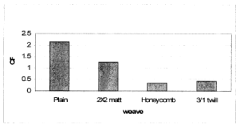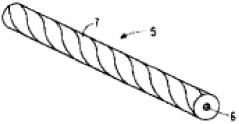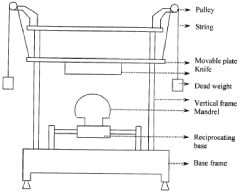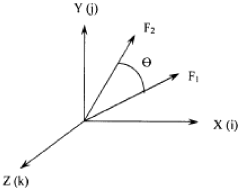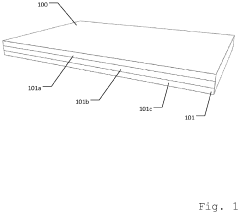Kevlar's Contribution to Lightweight Personal Armor Design
JUL 10, 20258 MIN READ
Generate Your Research Report Instantly with AI Agent
Patsnap Eureka helps you evaluate technical feasibility & market potential.
Kevlar Evolution in Armor
Kevlar, a synthetic fiber developed by DuPont in the 1960s, has revolutionized personal armor design since its introduction to the field in the early 1970s. The evolution of Kevlar in armor applications has been marked by continuous improvements in strength, weight reduction, and overall protective capabilities.
Initially, Kevlar was primarily used as a replacement for steel in military helmets, offering significant weight reduction while maintaining protective properties. This early success paved the way for broader applications in body armor. The first generation of Kevlar vests, introduced in the mid-1970s, provided protection against handgun threats while being significantly lighter than their predecessors.
Throughout the 1980s and 1990s, advancements in Kevlar fiber technology led to the development of higher-performing variants. Kevlar 29 and Kevlar 49 offered improved strength-to-weight ratios, enabling the creation of more effective and comfortable armor solutions. These developments coincided with the introduction of multi-layer armor designs, which combined Kevlar with other materials to enhance overall protection.
The turn of the millennium saw the introduction of Kevlar KM2, specifically engineered for ballistic applications. This variant offered superior performance against high-velocity projectiles, further cementing Kevlar's position in personal armor design. Subsequent iterations, such as Kevlar XP, focused on improving protection against fragments and reducing back-face deformation.
In recent years, the evolution of Kevlar in armor has been characterized by its integration with other advanced materials and technologies. Hybrid designs incorporating ceramics, high-molecular-weight polyethylene (HMWPE), and other synthetic fibers have become increasingly common. These composite solutions aim to provide comprehensive protection against a wider range of threats while further reducing weight.
The latest developments in Kevlar technology for armor applications have focused on enhancing flexibility and comfort without compromising protective capabilities. Innovations in fiber weaving techniques and the development of Kevlar-based fabrics with improved heat and moisture management properties have contributed to more wearable armor solutions.
As threats continue to evolve, so does the application of Kevlar in personal armor design. Current research is exploring nanotechnology-enhanced Kevlar fibers and smart armor systems that can adapt to different threat levels. These advancements promise to further push the boundaries of lightweight, high-performance personal protection.
Initially, Kevlar was primarily used as a replacement for steel in military helmets, offering significant weight reduction while maintaining protective properties. This early success paved the way for broader applications in body armor. The first generation of Kevlar vests, introduced in the mid-1970s, provided protection against handgun threats while being significantly lighter than their predecessors.
Throughout the 1980s and 1990s, advancements in Kevlar fiber technology led to the development of higher-performing variants. Kevlar 29 and Kevlar 49 offered improved strength-to-weight ratios, enabling the creation of more effective and comfortable armor solutions. These developments coincided with the introduction of multi-layer armor designs, which combined Kevlar with other materials to enhance overall protection.
The turn of the millennium saw the introduction of Kevlar KM2, specifically engineered for ballistic applications. This variant offered superior performance against high-velocity projectiles, further cementing Kevlar's position in personal armor design. Subsequent iterations, such as Kevlar XP, focused on improving protection against fragments and reducing back-face deformation.
In recent years, the evolution of Kevlar in armor has been characterized by its integration with other advanced materials and technologies. Hybrid designs incorporating ceramics, high-molecular-weight polyethylene (HMWPE), and other synthetic fibers have become increasingly common. These composite solutions aim to provide comprehensive protection against a wider range of threats while further reducing weight.
The latest developments in Kevlar technology for armor applications have focused on enhancing flexibility and comfort without compromising protective capabilities. Innovations in fiber weaving techniques and the development of Kevlar-based fabrics with improved heat and moisture management properties have contributed to more wearable armor solutions.
As threats continue to evolve, so does the application of Kevlar in personal armor design. Current research is exploring nanotechnology-enhanced Kevlar fibers and smart armor systems that can adapt to different threat levels. These advancements promise to further push the boundaries of lightweight, high-performance personal protection.
Market Demand Analysis
The market demand for lightweight personal armor incorporating Kevlar has seen significant growth in recent years, driven by increasing global security concerns and the need for enhanced protection in both military and civilian sectors. Law enforcement agencies, private security firms, and military organizations worldwide are seeking advanced protective gear that offers superior ballistic resistance without compromising mobility and comfort.
In the military sector, the demand for Kevlar-based lightweight armor is particularly strong. Modern warfare scenarios require soldiers to be agile and mobile while maintaining high levels of protection. This has led to a surge in research and development efforts focused on integrating Kevlar into personal armor systems that can withstand high-velocity projectiles and shrapnel while reducing overall weight.
The law enforcement market has also shown a growing interest in Kevlar-enhanced armor solutions. Police departments and special units are increasingly equipping their personnel with lightweight protective gear to improve officer safety during high-risk operations. This trend is expected to continue as urban security challenges evolve and the need for quick-response capabilities increases.
In the civilian sector, there is a rising demand for discreet, lightweight personal protection. High-profile individuals, executives, and civilians in high-risk professions are seeking inconspicuous armor solutions that can be worn under regular clothing. This has opened up new market opportunities for Kevlar-based products designed for everyday wear.
The global personal protective equipment (PPE) market, which includes body armor, is projected to experience substantial growth. Factors contributing to this growth include increased defense spending in emerging economies, rising security concerns in urban areas, and technological advancements in material science that allow for more effective and comfortable armor designs.
Geographically, North America and Europe remain the largest markets for Kevlar-based personal armor, primarily due to their advanced military and law enforcement sectors. However, rapid growth is expected in Asia-Pacific and Middle Eastern markets, driven by increasing defense modernization programs and rising security threats.
The automotive and aerospace industries are also exploring the potential of Kevlar in lightweight armor applications for vehicle and aircraft protection. This cross-sector demand is further expanding the market for Kevlar-based protective solutions.
As environmental concerns gain prominence, there is a growing interest in sustainable and recyclable armor materials. This trend presents both challenges and opportunities for Kevlar-based products, pushing manufacturers to innovate in material composition and production processes to meet evolving market demands.
In the military sector, the demand for Kevlar-based lightweight armor is particularly strong. Modern warfare scenarios require soldiers to be agile and mobile while maintaining high levels of protection. This has led to a surge in research and development efforts focused on integrating Kevlar into personal armor systems that can withstand high-velocity projectiles and shrapnel while reducing overall weight.
The law enforcement market has also shown a growing interest in Kevlar-enhanced armor solutions. Police departments and special units are increasingly equipping their personnel with lightweight protective gear to improve officer safety during high-risk operations. This trend is expected to continue as urban security challenges evolve and the need for quick-response capabilities increases.
In the civilian sector, there is a rising demand for discreet, lightweight personal protection. High-profile individuals, executives, and civilians in high-risk professions are seeking inconspicuous armor solutions that can be worn under regular clothing. This has opened up new market opportunities for Kevlar-based products designed for everyday wear.
The global personal protective equipment (PPE) market, which includes body armor, is projected to experience substantial growth. Factors contributing to this growth include increased defense spending in emerging economies, rising security concerns in urban areas, and technological advancements in material science that allow for more effective and comfortable armor designs.
Geographically, North America and Europe remain the largest markets for Kevlar-based personal armor, primarily due to their advanced military and law enforcement sectors. However, rapid growth is expected in Asia-Pacific and Middle Eastern markets, driven by increasing defense modernization programs and rising security threats.
The automotive and aerospace industries are also exploring the potential of Kevlar in lightweight armor applications for vehicle and aircraft protection. This cross-sector demand is further expanding the market for Kevlar-based protective solutions.
As environmental concerns gain prominence, there is a growing interest in sustainable and recyclable armor materials. This trend presents both challenges and opportunities for Kevlar-based products, pushing manufacturers to innovate in material composition and production processes to meet evolving market demands.
Current Kevlar Challenges
Despite its revolutionary impact on personal armor design, Kevlar faces several significant challenges in the current landscape of lightweight protective gear. One of the primary issues is the material's limited ability to dissipate energy from high-velocity projectiles effectively. While Kevlar excels at stopping bullets, it struggles to distribute the impact force over a wider area, potentially leading to severe blunt trauma for the wearer.
Another challenge lies in Kevlar's susceptibility to environmental factors. Prolonged exposure to ultraviolet light, moisture, and certain chemicals can degrade the material's performance over time. This vulnerability necessitates careful storage and maintenance protocols, which can be problematic in field conditions or for long-term deployment scenarios.
The manufacturing process of Kevlar also presents challenges. The production of high-quality Kevlar fibers requires precise control over temperature, pressure, and chemical composition. This complexity leads to high production costs and potential supply chain vulnerabilities, which can impact the availability and affordability of Kevlar-based armor solutions.
Weight reduction remains an ongoing challenge for Kevlar armor designs. While significantly lighter than traditional metal armor, there is a constant push to further reduce the weight of personal protective equipment without compromising its protective capabilities. This challenge is particularly acute for military and law enforcement personnel who must maintain mobility and endurance during extended operations.
Kevlar's limited heat resistance poses another significant challenge. At temperatures above 500°C, the material begins to lose its strength and protective properties. This limitation can be problematic in scenarios involving fire or extreme heat, necessitating the development of hybrid solutions that incorporate other heat-resistant materials.
The integration of Kevlar with other materials and technologies presents both opportunities and challenges. While combining Kevlar with ceramics, foams, or other advanced materials can enhance overall protection, achieving optimal integration without adding excessive weight or bulk remains a complex engineering problem.
Lastly, the emergence of new threats and evolving battlefield tactics continually challenges the effectiveness of Kevlar-based armor. The proliferation of armor-piercing ammunition and the increasing use of improvised explosive devices require ongoing research and development to ensure that Kevlar-based protective gear remains effective against these evolving threats.
Another challenge lies in Kevlar's susceptibility to environmental factors. Prolonged exposure to ultraviolet light, moisture, and certain chemicals can degrade the material's performance over time. This vulnerability necessitates careful storage and maintenance protocols, which can be problematic in field conditions or for long-term deployment scenarios.
The manufacturing process of Kevlar also presents challenges. The production of high-quality Kevlar fibers requires precise control over temperature, pressure, and chemical composition. This complexity leads to high production costs and potential supply chain vulnerabilities, which can impact the availability and affordability of Kevlar-based armor solutions.
Weight reduction remains an ongoing challenge for Kevlar armor designs. While significantly lighter than traditional metal armor, there is a constant push to further reduce the weight of personal protective equipment without compromising its protective capabilities. This challenge is particularly acute for military and law enforcement personnel who must maintain mobility and endurance during extended operations.
Kevlar's limited heat resistance poses another significant challenge. At temperatures above 500°C, the material begins to lose its strength and protective properties. This limitation can be problematic in scenarios involving fire or extreme heat, necessitating the development of hybrid solutions that incorporate other heat-resistant materials.
The integration of Kevlar with other materials and technologies presents both opportunities and challenges. While combining Kevlar with ceramics, foams, or other advanced materials can enhance overall protection, achieving optimal integration without adding excessive weight or bulk remains a complex engineering problem.
Lastly, the emergence of new threats and evolving battlefield tactics continually challenges the effectiveness of Kevlar-based armor. The proliferation of armor-piercing ammunition and the increasing use of improvised explosive devices require ongoing research and development to ensure that Kevlar-based protective gear remains effective against these evolving threats.
Existing Kevlar Solutions
01 Lightweight Kevlar composites
Development of lightweight Kevlar composites for various applications, focusing on reducing overall weight while maintaining strength and durability. These composites often incorporate other materials to enhance specific properties, such as impact resistance or thermal stability.- Lightweight Kevlar composites: Development of lightweight Kevlar composites for various applications, focusing on reducing overall weight while maintaining strength and durability. These composites often incorporate other materials to enhance specific properties, such as impact resistance or thermal stability.
- Kevlar-reinforced protective gear: Utilization of Kevlar in protective gear and equipment, emphasizing its high strength-to-weight ratio. This includes applications in body armor, helmets, and other personal protective equipment where weight reduction is crucial for user comfort and mobility.
- Kevlar in aerospace applications: Integration of Kevlar in aerospace components to reduce aircraft weight and improve fuel efficiency. This includes the use of Kevlar in aircraft interiors, structural components, and composite materials for various parts of the aircraft.
- Kevlar-based fabrics for lightweight clothing: Development of Kevlar-based fabrics for lightweight, protective clothing. These fabrics combine the strength of Kevlar with other materials to create durable, comfortable, and lightweight garments for various industries and applications.
- Weight optimization techniques for Kevlar products: Implementation of various techniques to optimize the weight of Kevlar products while maintaining their performance characteristics. This includes innovative manufacturing processes, material combinations, and structural designs to reduce overall weight without compromising strength.
02 Kevlar-reinforced protective gear
Utilization of Kevlar in protective equipment and clothing to provide high strength-to-weight ratio protection. This includes applications in body armor, helmets, and other personal protective equipment where minimizing weight is crucial for user comfort and mobility.Expand Specific Solutions03 Kevlar in aerospace applications
Integration of Kevlar materials in aerospace components to reduce aircraft weight without compromising structural integrity. This includes use in aircraft interiors, cargo containers, and certain exterior components where weight reduction is critical for fuel efficiency.Expand Specific Solutions04 Kevlar-based fabrics for lightweight apparel
Development of Kevlar-infused fabrics for lightweight, durable clothing and accessories. These materials offer enhanced tear and abrasion resistance while maintaining a low weight profile, suitable for outdoor and sports applications.Expand Specific Solutions05 Weight optimization techniques for Kevlar structures
Research into methods for optimizing the weight of Kevlar structures through innovative design, manufacturing processes, and material combinations. This includes techniques such as selective reinforcement, hollow fiber structures, and advanced weaving patterns to maximize strength while minimizing weight.Expand Specific Solutions
Key Kevlar Manufacturers
The development of Kevlar's contribution to lightweight personal armor design is in a mature stage, with a significant market size driven by military and law enforcement demands. The technology has reached a high level of maturity, with ongoing research focused on enhancing performance and reducing weight. Key players like RMA Armament, Inc. and QinetiQ Ltd. are at the forefront of innovation, while academic institutions such as MIT and Beijing Institute of Technology contribute to advanced research. The competitive landscape is diverse, including specialized armor manufacturers, defense contractors, and research organizations, all striving to improve protection, comfort, and mobility in personal armor systems.
RMA Armament, Inc.
Technical Solution: RMA Armament has developed advanced Kevlar-based body armor solutions that incorporate multi-hit capability and enhanced ergonomics. Their proprietary manufacturing process allows for the creation of lightweight yet highly effective armor plates. The company utilizes a unique layering technique that combines Kevlar fibers with ceramic and polyethylene materials to create a composite structure that maximizes protection while minimizing weight [1]. This innovative approach has resulted in armor that is up to 20% lighter than traditional steel plates while offering superior ballistic protection [3].
Strengths: Superior weight-to-protection ratio, enhanced multi-hit capability, improved ergonomics for user comfort. Weaknesses: Potentially higher production costs, limited scalability for mass production.
QinetiQ Ltd.
Technical Solution: QinetiQ has developed a range of Kevlar-based personal armor solutions that focus on maximizing protection while minimizing weight and bulk. Their approach involves using advanced computer modeling to optimize the arrangement of Kevlar fibers and other materials in a multi-layer composite structure. This allows for the creation of armor that can effectively dissipate energy from ballistic impacts across a larger area [2]. QinetiQ's latest designs incorporate nano-materials and smart fabrics that can adapt to different threat levels, providing enhanced protection against both ballistic and stabbing threats [4]. The company has also pioneered the use of 3D-printed Kevlar structures to create customized armor solutions for specific body shapes and sizes.
Strengths: Advanced modeling techniques for optimized protection, incorporation of smart materials for adaptive defense. Weaknesses: Potentially high costs for cutting-edge technologies, complexity in manufacturing processes.
Kevlar Innovations
Design and development of an instrument to measure cut resistance of fabrics
PatentInactiveIN276DEL2008A
Innovation
- Development of an instrument to measure cut resistance by determining the load required and distance traveled to make a cut in fabrics, along with a model to analyze cutting forces and distance, which considers fabric construction, material parameters, and process parameters to optimize cut-resistant fabric design.
Laminate Structure Comprising a Nanoparticle Quasi-Thermoset Polymer
PatentInactiveUS20190346237A1
Innovation
- A laminated structure incorporating a carbon nanoparticle thermoplastic elastomer layer made of ultra-high modulus, super elastic shape memory thermoplastic polyurethane with UV stabilizers and siloxane process aids between substrates to disperse energy and increase tear strength, reducing back-face deformation and trauma from projectile impacts.
Ballistic Testing Standards
Ballistic testing standards play a crucial role in evaluating the effectiveness of lightweight personal armor designs incorporating Kevlar. These standards provide a systematic approach to assessing the protective capabilities of armor against various types of ballistic threats. The National Institute of Justice (NIJ) in the United States has established widely recognized standards, such as NIJ Standard-0101.06, which defines specific test protocols for body armor.
These standards typically involve firing projectiles at armor samples under controlled conditions. The test setup includes a specific distance between the weapon and the armor, as well as predetermined velocities for different threat levels. The armor is mounted on a clay backing material that simulates human tissue, allowing for the measurement of backface deformation – the indentation created in the clay when a bullet impacts the armor.
Different levels of protection are defined within these standards, ranging from Level IIA to Level IV. Each level corresponds to specific types of ammunition and impact velocities that the armor must withstand. For instance, Level IIIA armor is designed to stop handgun rounds, while Level IV is capable of stopping armor-piercing rifle ammunition.
The testing process involves multiple shots on a single armor panel to assess its ability to withstand repeated impacts. The armor must prevent penetration and limit backface deformation to acceptable levels, typically less than 44mm for NIJ standards. This ensures that even if the armor stops the bullet, the wearer is protected from potentially lethal blunt trauma.
Kevlar's unique properties, such as high tensile strength-to-weight ratio and excellent energy absorption capabilities, have significantly contributed to the development of armor that can meet these rigorous testing standards while remaining lightweight. The fiber's ability to rapidly decelerate and disperse the energy of incoming projectiles has allowed for the creation of armor that provides superior protection without compromising mobility.
In addition to NIJ standards, other international standards exist, such as those developed by NATO and various national military organizations. These standards often include additional tests for environmental factors, such as exposure to heat, cold, moisture, and UV radiation, to ensure the armor's performance under diverse conditions.
As threats evolve, ballistic testing standards are periodically updated to address new types of ammunition and emerging ballistic threats. This ongoing refinement process ensures that armor designs incorporating Kevlar continue to provide effective protection against contemporary threats while maintaining their lightweight characteristics.
These standards typically involve firing projectiles at armor samples under controlled conditions. The test setup includes a specific distance between the weapon and the armor, as well as predetermined velocities for different threat levels. The armor is mounted on a clay backing material that simulates human tissue, allowing for the measurement of backface deformation – the indentation created in the clay when a bullet impacts the armor.
Different levels of protection are defined within these standards, ranging from Level IIA to Level IV. Each level corresponds to specific types of ammunition and impact velocities that the armor must withstand. For instance, Level IIIA armor is designed to stop handgun rounds, while Level IV is capable of stopping armor-piercing rifle ammunition.
The testing process involves multiple shots on a single armor panel to assess its ability to withstand repeated impacts. The armor must prevent penetration and limit backface deformation to acceptable levels, typically less than 44mm for NIJ standards. This ensures that even if the armor stops the bullet, the wearer is protected from potentially lethal blunt trauma.
Kevlar's unique properties, such as high tensile strength-to-weight ratio and excellent energy absorption capabilities, have significantly contributed to the development of armor that can meet these rigorous testing standards while remaining lightweight. The fiber's ability to rapidly decelerate and disperse the energy of incoming projectiles has allowed for the creation of armor that provides superior protection without compromising mobility.
In addition to NIJ standards, other international standards exist, such as those developed by NATO and various national military organizations. These standards often include additional tests for environmental factors, such as exposure to heat, cold, moisture, and UV radiation, to ensure the armor's performance under diverse conditions.
As threats evolve, ballistic testing standards are periodically updated to address new types of ammunition and emerging ballistic threats. This ongoing refinement process ensures that armor designs incorporating Kevlar continue to provide effective protection against contemporary threats while maintaining their lightweight characteristics.
Ergonomic Design Factors
Ergonomic design factors play a crucial role in the development of lightweight personal armor incorporating Kevlar. The integration of Kevlar into armor systems has revolutionized personal protection, offering enhanced ballistic resistance while significantly reducing weight. However, the effectiveness of such armor is heavily dependent on its ergonomic design, which directly impacts user comfort, mobility, and overall performance.
One of the primary ergonomic considerations in Kevlar-based armor design is weight distribution. The lightweight nature of Kevlar allows for more strategic placement of protective elements, enabling designers to create armor that better conforms to the human body's natural contours. This improved weight distribution minimizes strain on the wearer, reducing fatigue and enhancing endurance during extended periods of use.
Flexibility is another key ergonomic factor that Kevlar facilitates. The material's inherent pliability allows for the creation of armor that moves more naturally with the wearer's body. This increased flexibility not only improves comfort but also enhances the user's range of motion, which is critical in tactical situations where agility and quick responses are essential.
The breathability of armor systems incorporating Kevlar is a significant ergonomic consideration. Advanced designs utilize Kevlar's properties to create ventilation channels and moisture-wicking layers, improving air circulation and heat dissipation. This feature is crucial for maintaining the wearer's comfort and preventing overheating, especially in high-stress or warm environments.
Customization and fit are also essential ergonomic aspects that Kevlar enables. The material's versatility allows for the creation of modular armor systems that can be adjusted to fit different body types and sizes. This adaptability ensures that the armor provides optimal protection while maintaining comfort for a wide range of users.
The integration of Kevlar in multi-layer armor designs has led to innovations in impact absorption and load distribution. By combining Kevlar with other materials, designers can create armor that not only stops projectiles but also dissipates kinetic energy more effectively. This improved energy management reduces the physical impact on the wearer, enhancing both safety and comfort.
Lastly, the lightweight nature of Kevlar contributes to improved ergonomics by reducing the overall bulk of personal armor. This reduction in volume allows for better integration with other equipment and clothing, minimizing interference with the wearer's movements and activities. The result is armor that provides high levels of protection without significantly impeding the user's operational capabilities.
One of the primary ergonomic considerations in Kevlar-based armor design is weight distribution. The lightweight nature of Kevlar allows for more strategic placement of protective elements, enabling designers to create armor that better conforms to the human body's natural contours. This improved weight distribution minimizes strain on the wearer, reducing fatigue and enhancing endurance during extended periods of use.
Flexibility is another key ergonomic factor that Kevlar facilitates. The material's inherent pliability allows for the creation of armor that moves more naturally with the wearer's body. This increased flexibility not only improves comfort but also enhances the user's range of motion, which is critical in tactical situations where agility and quick responses are essential.
The breathability of armor systems incorporating Kevlar is a significant ergonomic consideration. Advanced designs utilize Kevlar's properties to create ventilation channels and moisture-wicking layers, improving air circulation and heat dissipation. This feature is crucial for maintaining the wearer's comfort and preventing overheating, especially in high-stress or warm environments.
Customization and fit are also essential ergonomic aspects that Kevlar enables. The material's versatility allows for the creation of modular armor systems that can be adjusted to fit different body types and sizes. This adaptability ensures that the armor provides optimal protection while maintaining comfort for a wide range of users.
The integration of Kevlar in multi-layer armor designs has led to innovations in impact absorption and load distribution. By combining Kevlar with other materials, designers can create armor that not only stops projectiles but also dissipates kinetic energy more effectively. This improved energy management reduces the physical impact on the wearer, enhancing both safety and comfort.
Lastly, the lightweight nature of Kevlar contributes to improved ergonomics by reducing the overall bulk of personal armor. This reduction in volume allows for better integration with other equipment and clothing, minimizing interference with the wearer's movements and activities. The result is armor that provides high levels of protection without significantly impeding the user's operational capabilities.
Unlock deeper insights with Patsnap Eureka Quick Research — get a full tech report to explore trends and direct your research. Try now!
Generate Your Research Report Instantly with AI Agent
Supercharge your innovation with Patsnap Eureka AI Agent Platform!
